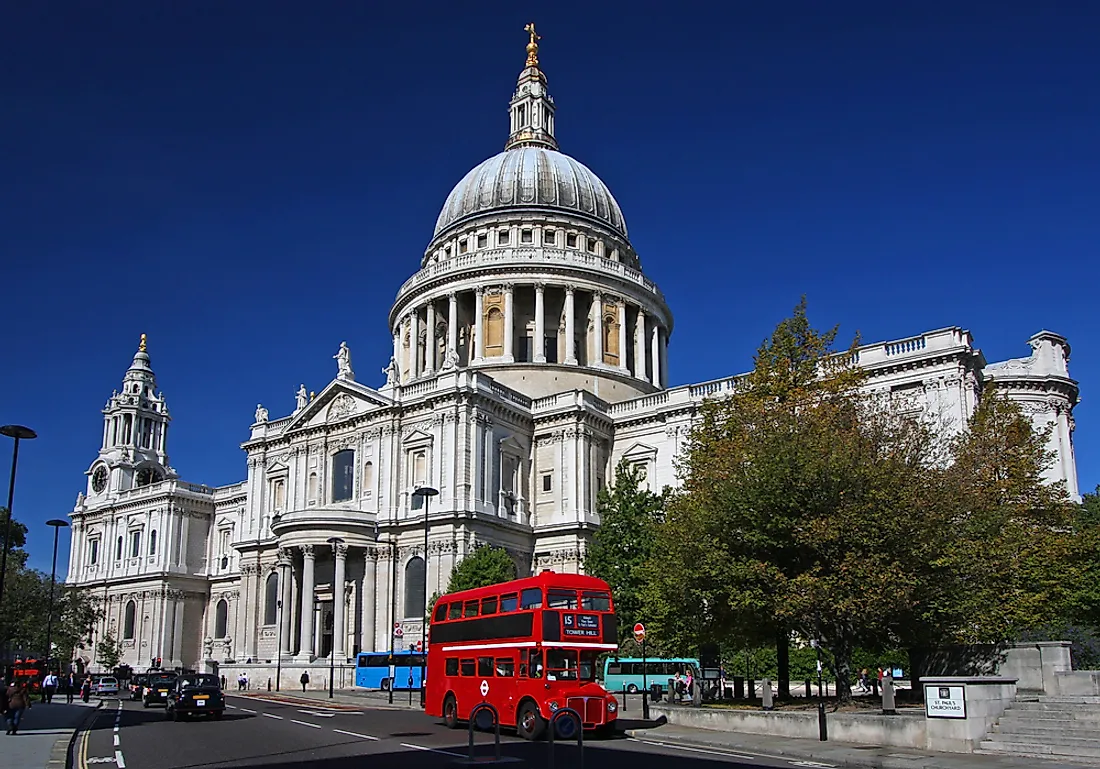St Paul's Cathedral - Notable Cathedrals

The St. Paul’s Cathedral situated in the central city of London atop the Ludgate Hill is the mother church of the Diocese of London and the seat of the Anglican Bishop of London. It is the second largest church in London after the Liverpool Cathedral and hosts the second largest ring bells in the world and the largest in Europe. The exceptional dome of the cathedral visible in the city’s skyline is the second largest in the world after the Saint Peter’s in Rome. St. Paul Cathedral has a unique history buried in its architectural designs both in the interior and exterior.
History
St. Paul Cathedral was the first Christian Cathedral in London dedicated to Saint Paul during the reign of King Aethelberht I in 604 CE. The first building of the church was made from wood under the orders of Mellitus, the Bishop of East Saxons. It was later destroyed by fire in 675 CE and rebuilt ten years later, and subsequently destroyed in 962 by the Viking invaders. The Normans afterward replaced the building using Caen stone and replaced the Romanesque design with Gothic architecture hitherto destruction by the Great London Fire in 1666. The old St. Paul Cathedral was supposedly larger than the present cathedral as its spire stood 489 feet above the ground.
After the civil war, a decision was made to reconstruct the cathedral with modern architectural designs. Sir Christopher Wren, who was in charge of reconstructing churches destroyed during the warfare period, together with the Bishops in London and Oxford agreed to design the new Cathedral stating that it would be handsome and noble to all the ends of it and to the reputation of London and the nation. Although the Cathedral survived the Blitz of the British War, the High Altar and the northern transept were destroyed by bombs in 1940 and 1941 respectively.
Unique Features
The new St. Paul's Cathedral combined different architectural designs of Baroque, Gothic, and Neoclassical backgrounds to signify the ethics of both the Victorian Reestablishment and 17th-century philosophy. Its most distinctive feature is the 356 feet dome, which overlooked London’s skyline for over 250 years. The dome has three main shells comprising of the inner dome, an outer dome with a cross standing 366 feet from the floor, and a masked brick cone for physical support.
Below the outer dome is the legendary Golden Gallery, standing 280 feet high and with 530 steps, offering a panoramic view of the splendid city of London. The geometric staircase in the southwest tower is one of its kind and only found in the cathedral. It leads to the cathedral’s library and archives that contain a rich history of the medieval times and Wren’s proposed designs of the church.
Conservation
Conservation efforts have been adopted through the St Paul's Cathedral Conservation Area Deed and the Ludgate Hill Conservation Area Charter. The two agreements document conservation efforts by the City of London and the Cathedral’s management. An example of such efforts is the largest crypt in Europe located in the southern end of the cathedral’s isle where intellectuals such as the Duke of Wellington, prominent soldiers, and artists have been buried.











